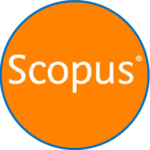
A review on material analysis of food safety based on fluorescence spectrum combined with artificial neural network technology
Abstract Aiming at the problem that it is difficult to achieve rapid and accurate detection of pesticide residues, the artificial neural network method is used to separate the mixed fluorescence spectra in the measurement of acetamiprid pesticide residues, and a fluorescence spectrum that can quickly detect the pesticide residues of acetamiprid on solid surfaces is designed. According to the back-propagation algorithm, the three-layer artificial neural network principle is used to detect the acetamiprid residue in the mixed system of acetamiprid and filter paper with severely overlapping fluorescence spectra. In the range of 340nm~400nm, using the fluorescence intensity values at 20 characteristic wavelengths as the characteristic network parameters, after network training and testing, the recovery rates of acetamiprid concentrations of 40mg/kg and 90mg/kg are 102% and 97%, respectively. The relative standard deviations of the determination results were 1.4% and 1.9%, respectively. The experimental results show that the BP neural network-assisted fluorescence spectroscopy method for the determination of acetamiprid pesticide residues on filter paper has the characteristics of fast network training, short detection period, and high measurement accuracy.






